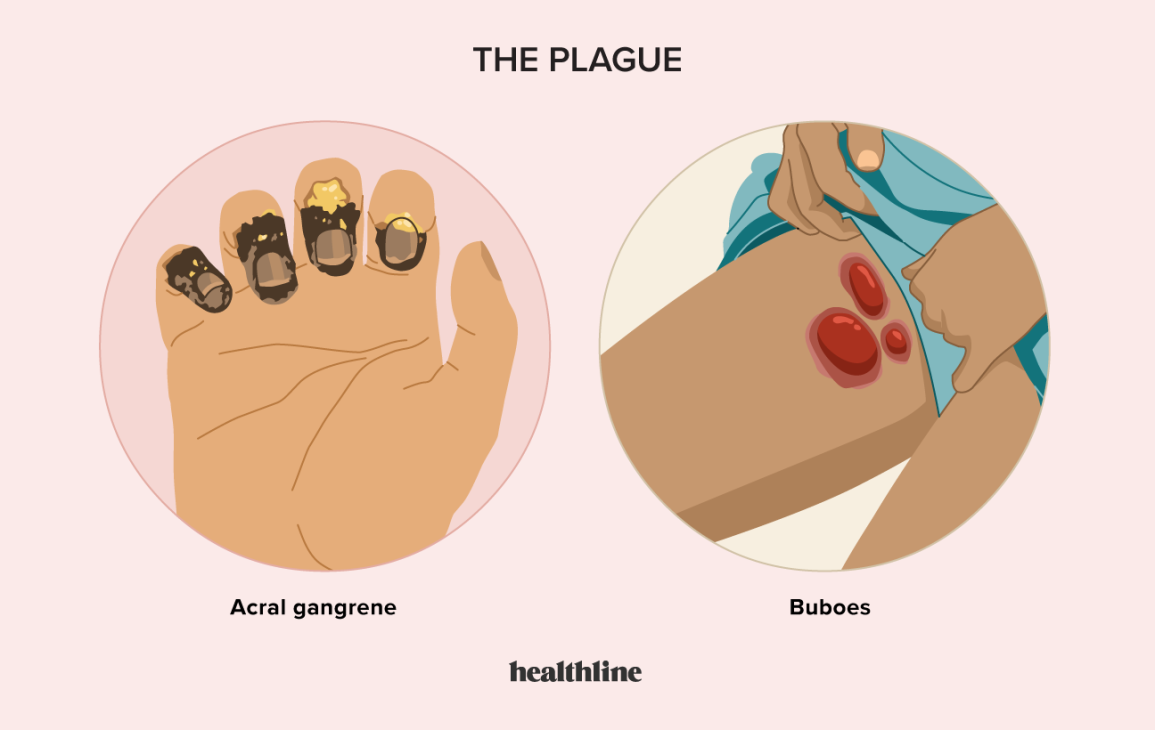In the annals of human history, few scourges have left as indelible a mark as the bubonic plague. This ancient disease, with its origins shrouded in mystery, has haunted humanity for centuries, leaving a trail of devastation and fear in its wake. Often referred to as the “Black Death,” the bubonic plague swept through Europe in the 14th century, claiming the lives of an estimated 25 million people, decimating entire communities, and reshaping the course of history.
The bubonic plague is caused by the bacterium Yersinia pestis, which is primarily transmitted through the bites of fleas that infest rodents such as rats. In humans, the disease manifests in various forms, including bubonic, septicemic, and pneumonic plague, each with its own set of symptoms and mortality rates. The bubonic form, characterized by painful swollen lymph nodes or “buboes,” is the most common and accounts for the majority of historical cases.
During the height of the Black Death, the bubonic plague ravaged cities and villages with alarming speed, leaving death and despair in its wake. Entire families were wiped out, and mass graves became a grim reminder of the disease’s relentless onslaught. Panic and hysteria gripped the populace as people searched in vain for ways to protect themselves from the invisible enemy that lurked in their midst.
In addition to its immediate toll on human life, the bubonic plague had profound socio-economic and cultural consequences. The sudden loss of a significant portion of the population led to labor shortages, skyrocketing wages for workers, and a redistribution of wealth. Feudal systems crumbled, and the power dynamics of society underwent seismic shifts as the old order gave way to new realities.

Despite its historical significance, the bubonic plague has not been consigned to the annals of the past. Outbreaks continue to occur sporadically in various parts of the world, albeit on a much smaller scale than in medieval times. Modern advancements in medicine and public health have enabled more effective detection, treatment, and prevention of the disease, but challenges remain, particularly in regions with limited access to healthcare and sanitation infrastructure.
Moreover, the specter of the bubonic plague continues to loom large in popular culture and collective memory. References to the Black Death abound in literature, art, and folklore, serving as a cautionary tale of the fragility of human existence and the unpredictability of nature. The haunting imagery of plague doctors clad in beaked masks and robes lingers in the public imagination, a stark reminder of humanity’s enduring struggle against disease and death.
In conclusion, the bubonic plague stands as a testament to the resilience of the human spirit in the face of adversity. Despite its devastating impact on society, the legacy of the Black Death endures as a poignant reminder of the fragility of life and the enduring power of human ingenuity in the face of adversity. As we confront new challenges in the 21st century, the lessons of history remain as relevant as ever, reminding us of the importance of vigilance, preparedness, and compassion in the ongoing fight against infectious diseases.
If you enjoyed this read, check out our other posts.














What do you think?
Show comments / Leave a comment